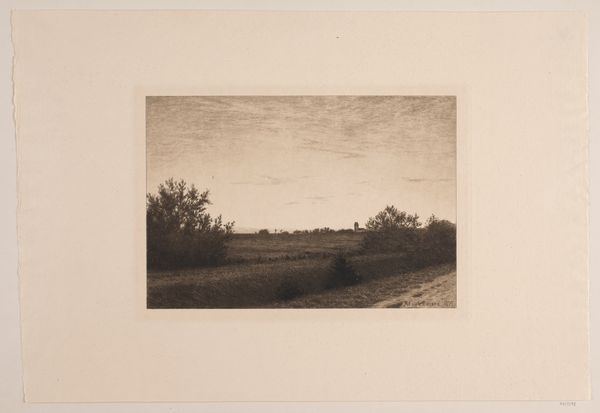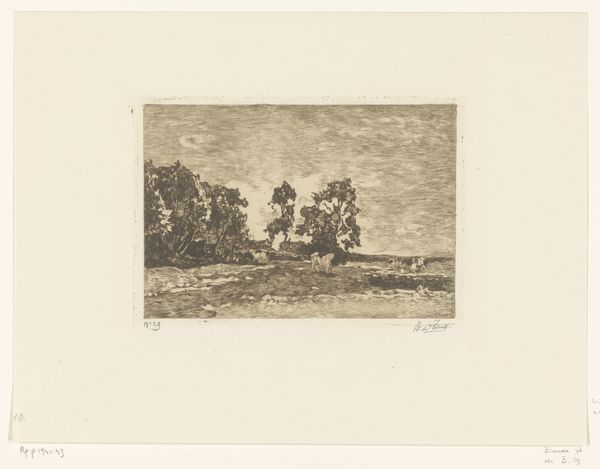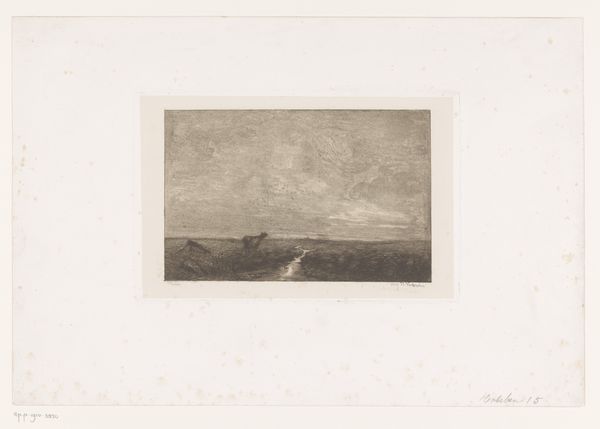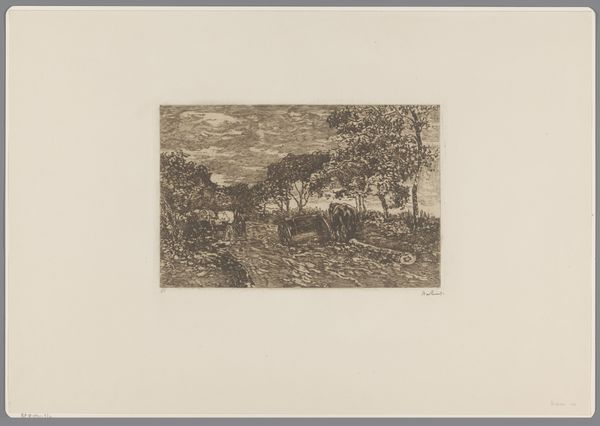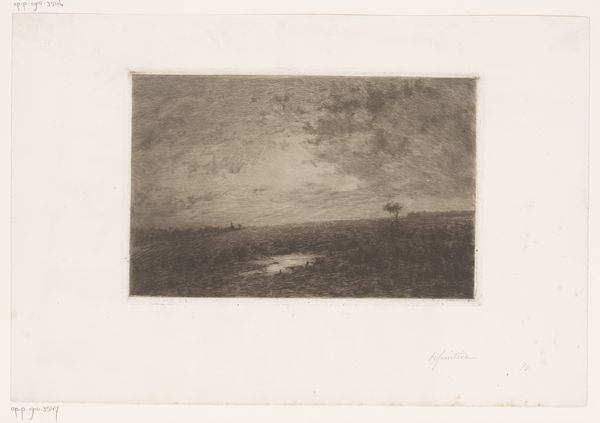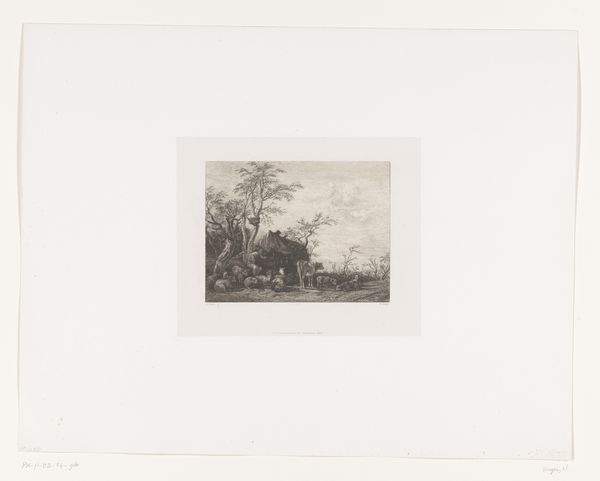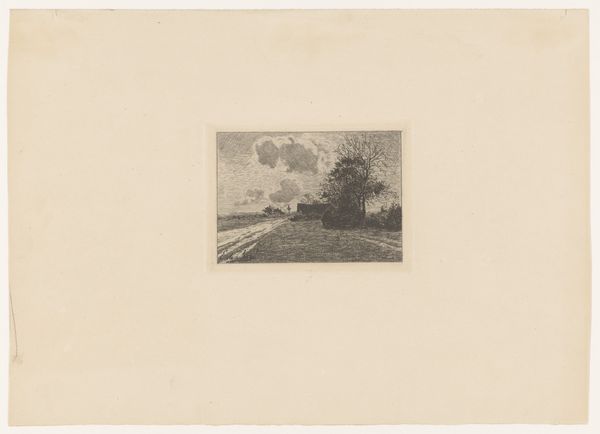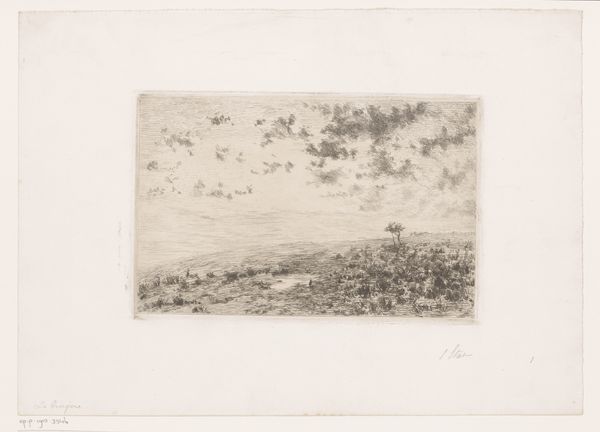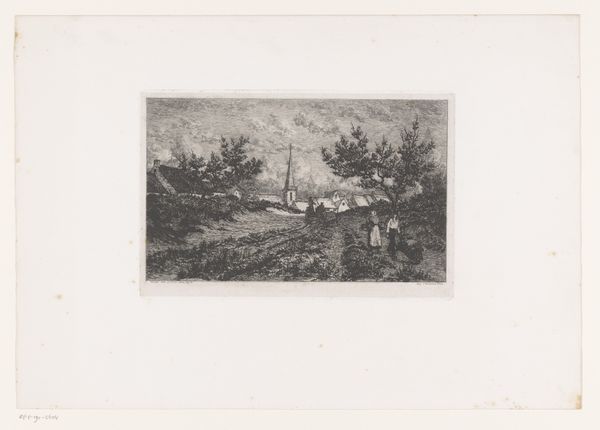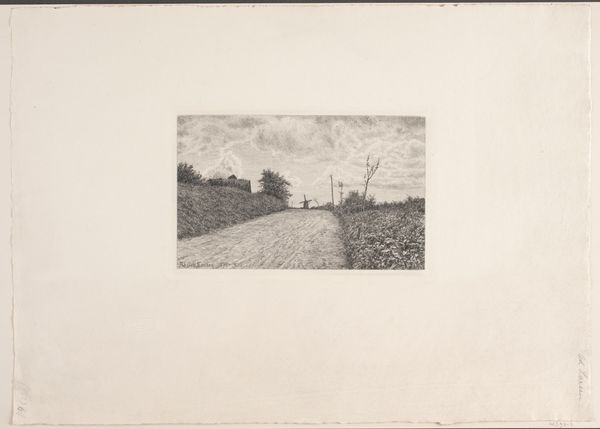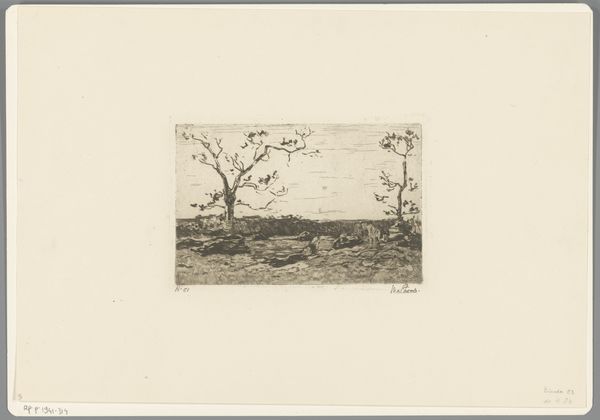
print, etching
#
dutch-golden-age
# print
#
etching
#
landscape
#
genre-painting
#
realism
Dimensions: height 99 mm, width 146 mm
Copyright: Rijks Museum: Open Domain
Curator: Here we have H. van Meerbeeck's etching, "Landscape with a Farm by a Stream," created sometime between 1850 and 1913. Editor: It’s wonderfully moody, almost melancholic. The limited tonal range creates a real sense of atmosphere, like twilight just before a storm. Curator: Indeed. Consider the rise of Realism at that time, especially as a response to industrialization and urbanization. Van Meerbeeck returns to the Dutch landscape to represent a rapidly disappearing way of life. Note the prominent placement of the traditional farm, a humble abode juxtaposed against an ominous sky. What sociopolitical meaning does that hold? Editor: The near-absence of figures is striking. Is it romanticizing a rural idyll, or perhaps a critique of the changing socio-economic landscape, where farmers are increasingly marginalized? The moon, positioned centrally, suggests an intersection between the domestic world and the natural. Curator: I agree. The etching technique allows for capturing incredible detail and texture. Look at the thatched roof of the farmhouse, rendered with such intricate lines that you can almost feel its rough texture. And how the small stream becomes the element tying together the composition. Consider too the symbolic function of streams in a body of art during periods of intense social change. Editor: Right. Etchings were more affordable than paintings, making art more accessible to a broader public. One could almost see this as a commentary on class and access, with nature democratized, albeit in grayscale. Perhaps Van Meerbeeck offers a critical perspective, highlighting how rapidly expanding capitalist agriculture threatens traditional forms of existence? Curator: These sorts of artworks invited new means of understanding individual relationships to labor and land, and how new hierarchies developed. They're incredibly vital primary sources for thinking about identity formation amid those shifts. Editor: It prompts us to question our contemporary relationships to rural life. How are those power structures mirrored today? Food production, climate change, displacement – are they reflections of those early Realist concerns? Curator: A perfect illustration of the enduring relevance of historical works! Editor: It does leave me wondering how we can leverage that context to empower rural communities today.
Comments
No comments
Be the first to comment and join the conversation on the ultimate creative platform.
